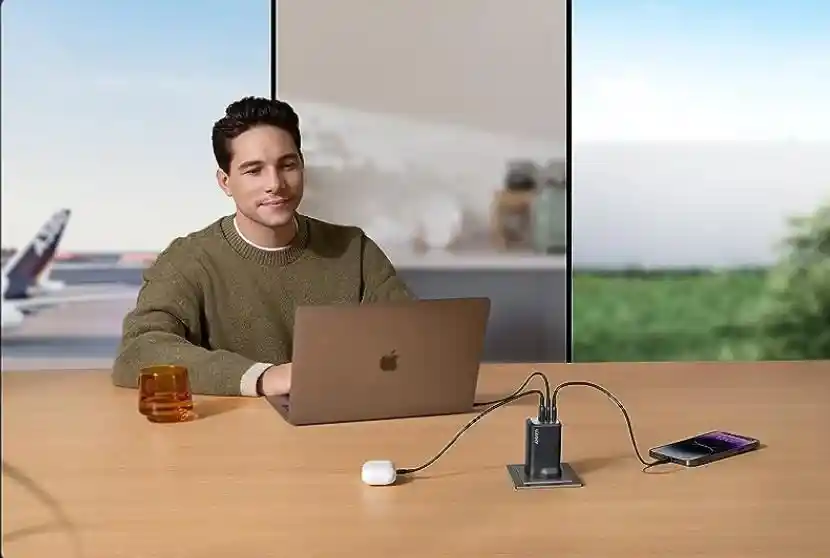In the world of trucking and logistics, technology has become a driving force for increased efficiency and safety. However, not all technological advancements are met with open arms. Recently, a court order has demanded that a trucking company remove its driver-facing cameras, sparking a debate about privacy, safety, and legal implications. This decision raises critical questions and could have far-reaching impacts on the industry.
What does it mean when a court orders a trucking company to remove driver-facing cameras? Are these devices essential for monitoring driver behavior, or do they pose an unnecessary invasion of privacy? In this article, we’ll explore the ramifications of this court order, examine the benefits and drawbacks of driver-facing cameras, and consider how this legal decision might shape the future of the trucking industry.
The removal of driver-facing cameras could lead to significant changes in how trucking companies operate and how drivers are monitored. This move highlights the delicate balance between leveraging technology for safety and respecting individual privacy. Read on to understand the intricacies of this topic and what it means for truck drivers, fleet managers, and legal professionals.
The Rise of Driver-Facing Cameras
Driver-facing cameras have gained popularity in the trucking industry over the last decade. These devices are often installed to monitor drivers’ behavior, aiming to enhance safety and accountability on the road. By capturing footage inside the cab, these cameras can provide insights into a driver’s actions, such as looking away from the road or using a phone while driving.
The technology behind driver-facing cameras is sophisticated. They typically include features such as real-time alerts, night vision, and high-definition video recording. These capabilities allow fleet managers to receive instant notifications if a driver engages in risky behavior, enabling quick intervention and potentially preventing accidents.
However, the introduction of driver-facing cameras has not been without controversy. Many truck drivers feel that these devices invade their privacy and create a stressful work environment. The constant surveillance can lead to heightened anxiety and a sense of being watched at all times, which some argue outweighs the safety benefits.
Legal Implications of Privacy
The recent court order to remove driver-facing cameras brings the issue of privacy to the forefront. Privacy laws vary across states and countries, but they generally aim to protect individuals from intrusive surveillance, especially in personal or private spaces. For truck drivers, the cab can be considered a personal space, where they spend long hours and perform daily routines.
Legal experts argue that the use of driver-facing cameras may infringe on privacy rights, particularly if the footage is used beyond safety monitoring purposes. Concerns arise about who has access to the video, how long it is stored, and whether it could be used against drivers in disciplinary actions or legal proceedings.
The court’s decision highlights the need for clear regulations and guidelines on the use of surveillance technology in the workplace. Striking a balance between safety and privacy is crucial, and companies must ensure compliance with existing laws while respecting their employees’ rights.
Safety Versus Privacy
The debate over driver-facing cameras boils down to a fundamental question: should safety take precedence over privacy? Proponents of these cameras argue that they are indispensable tools for improving road safety. By identifying risky behaviors in real time, cameras can help prevent accidents and save lives.
On the other hand, opponents emphasize the importance of respecting drivers’ privacy. They claim that constant monitoring creates a culture of mistrust and can negatively impact job satisfaction and mental health. Instead of relying solely on surveillance, some suggest that companies should invest in driver training programs and promote a culture of safety through positive reinforcement.
The court order to remove driver-facing cameras presents an opportunity to revisit this debate and find alternative solutions that address both safety concerns and privacy considerations.
Impact on Truck Drivers
For truck drivers, the removal of driver-facing cameras may bring a sense of relief and improved morale. Many drivers have expressed concerns about feeling like they are under constant surveillance, leading to stress and anxiety on the job. Without the cameras, drivers may feel more trusted and respected by their employers.
However, this change also raises questions about accountability. Driver-facing cameras have been effective in identifying and addressing unsafe driving practices. Without this technology, companies may need to find alternative methods to ensure driver safety and maintain high standards on the road.
Ultimately, the impact on truck drivers will depend on how companies choose to adapt to the absence of cameras. It’s essential for companies to communicate openly with drivers and involve them in discussions about new safety measures and expectations.
The Role of Fleet Managers
Fleet managers play a crucial role in implementing safety protocols and ensuring compliance with industry regulations. The removal of driver-facing cameras presents both challenges and opportunities for fleet managers to rethink their approach to safety and monitoring.
With cameras off the table, fleet managers may need to explore other technologies or strategies to monitor driver behavior and maintain safety standards. This could involve using telematics systems, which provide data on vehicle performance, speed, and location, or investing in advanced driver training programs.
Effective communication with drivers is key to maintaining trust and cooperation. Fleet managers should engage with drivers to understand their concerns and work collaboratively to develop new safety practices that prioritize both safety and privacy.
Legal Perspectives on Surveillance
From a legal standpoint, the use of surveillance technology in the workplace is a complex issue that requires careful consideration of privacy rights and legal obligations. The court order to remove driver-facing cameras underscores the importance of understanding and complying with privacy laws.
Legal professionals emphasize the need for companies to conduct thorough risk assessments before implementing surveillance technology. They should consider factors such as the necessity of the technology, its potential impact on employees’ privacy, and whether less intrusive alternatives are available.
Companies must also ensure transparency with their employees regarding how surveillance data will be used, who will have access to it, and how long it will be retained. Clear policies and procedures should be in place to address any privacy concerns and protect employees’ rights.
Innovative Alternatives to Cameras
While driver-facing cameras have been a popular choice for monitoring driver behavior, there are other innovative technologies that can enhance safety without compromising privacy. These alternatives focus on improving driver awareness and reducing distractions.
One such technology is advanced driver assistance systems (ADAS), which provide real-time alerts and notifications to drivers about potential hazards on the road. ADAS can help prevent accidents by alerting drivers to lane departures, collisions, or sudden braking.
Another alternative is wearable technology. Devices such as smartwatches or fitness trackers can monitor a driver’s alertness and provide reminders to take breaks or stay hydrated. These wearables can promote driver well-being and reduce the risk of fatigue-related accidents.
The Future of Trucking Safety
The court order to remove driver-facing cameras represents a turning point in the conversation about privacy and safety in the trucking industry. It signals a need to explore new approaches to ensuring safety while respecting drivers’ rights.
The future of trucking safety may involve a combination of advanced technologies and employee empowerment. Companies can leverage data analytics to gain insights into driving patterns and behaviors, allowing for targeted interventions and personalized training programs.
Additionally, fostering a culture of safety through open communication, recognition, and incentives can encourage responsible driving habits and reduce the reliance on surveillance technology.
FAQs With Answers
Are driver-facing cameras legal in all states?
Driver-facing camera legality varies by state, with some jurisdictions imposing strict privacy laws governing their use.
What are the alternatives to driver-facing cameras?
Alternatives include telematics systems, advanced driver assistance systems (ADAS), and wearable technology.
How can companies ensure driver privacy with surveillance technology?
Companies can protect privacy by implementing clear policies, obtaining consent, and minimizing data access and retention.
Do driver-facing cameras improve safety?
Driver-facing cameras can improve safety by identifying risky behaviors, but their effectiveness depends on proper implementation and usage.
How can truck drivers voice concerns about surveillance?
Truck drivers can raise concerns through internal feedback channels or seek legal advice if necessary.
Conclusion
The court’s decision to remove driver-facing cameras from trucking companies is an important development in the ongoing debate over privacy and safety in the industry. While these cameras have offered benefits in terms of monitoring driver behavior and improving road safety, they also raise valid concerns about privacy infringement.
By exploring alternative technologies and fostering a culture of safety, the trucking industry can continue to prioritize safety while respecting drivers’ rights. This decision serves as a reminder of the need for transparent policies, open communication, and innovative solutions that balance the interests of all stakeholders.
For truck drivers, fleet managers, and legal professionals, the road ahead involves navigating the complexities of technology, privacy, and safety to ensure a brighter and safer future for the industry.










